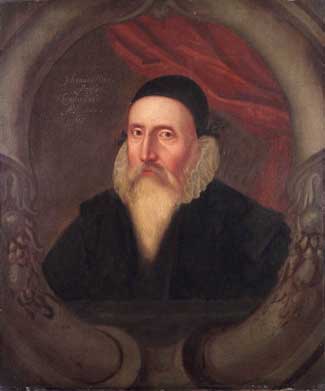
And I'm back!
Today I finished Karen Harper's novel THE TWYLIGHT TOWER, her third novel in a series of mysteries that feature Elizabeth I as a detective.
Yes, you read that right.
Now, Elizabethan-era mysteries are all over the place. I've read most of Edward Marston's novels featuring Nicholas Bracewell and his theatrical troupe, Lord Westfield's Men, and I've read a number of Fiona Buckley's novels that feature Ursula Blanchard, a secret agent for Elizabeth I. But Harper took it all one step further by actually centering her novels on the queen's court and having the queen herself as the main character.
In this installation, Elizabeth is not quite so sharp as she's been in other novels, as she's a bit too besotted by Robert Dudley. When a court lutenist falls from a tower, she too easily blames it on drunkenness. But the rest of her "Privy Plot Council," which includes former nurse Kat Ashley, herbalist Meg Milligrew, actor Ned Topside, mute artist Gil Sharpe, and Elizabeth's real-life adviser, Sir William Cecil, all suspect something more's going on.
This all leads, through circuitous routes, to the death of Robert Dudley's wife, Amy Robsart, which is actually a great unsolved historical mystery. Robert Dudley's marriage to Amy Robsart seemingly began as a love match but eventually proved to be an unhappy one. While Dudley tarried at court, romancing the Queen and obviously hoping to install himself as consort, Amy lived away from town at Cumnor Place. Amy was slowly dying of breast cancer (or perhaps an aortic aneurism; it is known it was a painful chest complaint, but the current historical opinion seems to favor breast cancer). Although some claim that Amy was basically a prisoner, evidence does seem to favor her being at liberty.

On Sept. 8, 1560, the day after the Queen's 27th birthday, Amy gave permission for her staff to attend a fair in nearby Abingdon, practically ordering reluctant staff to go. When they returned, her body was found, her neck broken, at the foot of a shallow flight of steps that led from her room to the hallway. (This painting is a Victorian imagining by William Frederick Yeames, exhibited in 1877.)
The death was announced to the Queen and Dudley, and both were shocked by the news. Dudley sent a friend to check on the situation and did not attend the funeral. The resulting controversy and scandal effectively ended any chance of Dudley marrying the Queen and also greatly reduced Dudley's influence at court.
Speculation abounds. If Dudley or Elizabeth ordered Amy's death, then it was a stupid move. There were already rumors that Elizabeth and Dudley were to wed, and that Amy would be removed, so an obviously suspicious death would be an obstacle. If Amy was truly dying, all they needed to do was wait out her death. Her ordering the servants out of the house is viewed as odd; many feel she had some reason to be alone. There is a school of thought that she committed suicide, despondent over the pain she was in and/or her husband's abandonment of her. There is a recent theory that her death was purely an accident, a spontaneous fracture caused by the porous bones that often accompany breast cancer. And there's the theory that her death was engineered by one of Elizabeth's courtiers who wanted to see Dudley brought down.
It's a fascinating puzzle, and Harper's novel offers a solution. It is, however, mixed up with an insane stalker plot, and an attempted assassination. THE TWYLIGHT TOWER isn't a bad entertainment; it has its flaws, and could be better (the Queen's dismissal of the lutenist's death at the beginning is just too convenient), but is an agreeable way to spent a winter afternoon.

One cool thing about the book is the introduction of a new addition the Queen's advisers, scientist and philosopher John Dee. THE TWYLIGHT TOWER downplays any connection he had to occultism, and makes him out to be a scientist and bibliophile. It also has a major inaccuracy, having Elizabeth meet him long after she became Queen, when in truth he was her adviser from the start, choosing her coronation date. He'd already had a troubled relationship with Elizabeth's predecessor, Queen Mary (aka Bloody Mary), after she rejected his proposal to build a national library, and at one point successfully defending himself from charges of treason against Mary.

And, of course, he was an occultist. This was the time when science and magic were very intertwined, and Dee's study of mathematics, astronomy, and navigation crossed over with his investigations into mysticism and natural philosophy. Harper's novel dismisses any notion that he's a magician, but history...and popular culture...say otherwise. He may not have been a full necromancer, as various stories would claim, but his experiments in divination and other occult sciences are historical fact. I may have to investigate any historical fiction about him; he's an interesting character.
And how much Elizabethan horror is out there? It's a ripe era for supernatural fiction; one wonders what's been done with the idea, if anything.




No comments:
Post a Comment